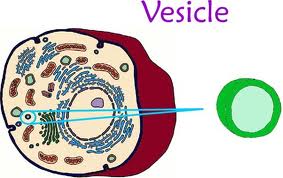Nucleoid: a region of the cytoplasm that is not enclosed in a mebranous sac.
Lipid bilayer: is a continous, oily boundary that prevents the free passage of water-soluble substances across it.
Electron microspcope: use magnetic lenses to bend and diffract beams of electrons, which cannot be diffracted through a glass lens.
Transmission electron microscope: are used to make images of its internal details.
Sacnning electron microscopes: direct a beams of electrons back and forth across a surface of a specimen, which has been given a thin metal coating.
Organelles: membranous sacs.
Secretory pathway:moves new polypeptide chains from some ribosomes through ER and Golgi bodies, then on the plasma membrane for release from the cell.
Endocytic pathway:moves ions and molecules into the cytoplasm.
Vesicles: tiny sacs.
Nuclear envelope:is a double-membrane system in which two lipid bilayers are pressed against each other.
Chromatin: the cell collection of DNA and all proteins associated with it.
Chromosome: is a double-stranded DNA molecule.
Peroximes: hold enzymes that digest fatty acids, amino acid, and hydrogenperoxide.
Cell junctions: are molecular structures where a cell sends or receives signals or materials, or recognizes and glues itself to cells of the same type.
Basal body: an organelle that started out as a centriole, the source of a 9+2 array of microtubules in a cillium or flagellum. It remains below the finished array.
Pseudopods: false feet.

















No hay comentarios:
Publicar un comentario